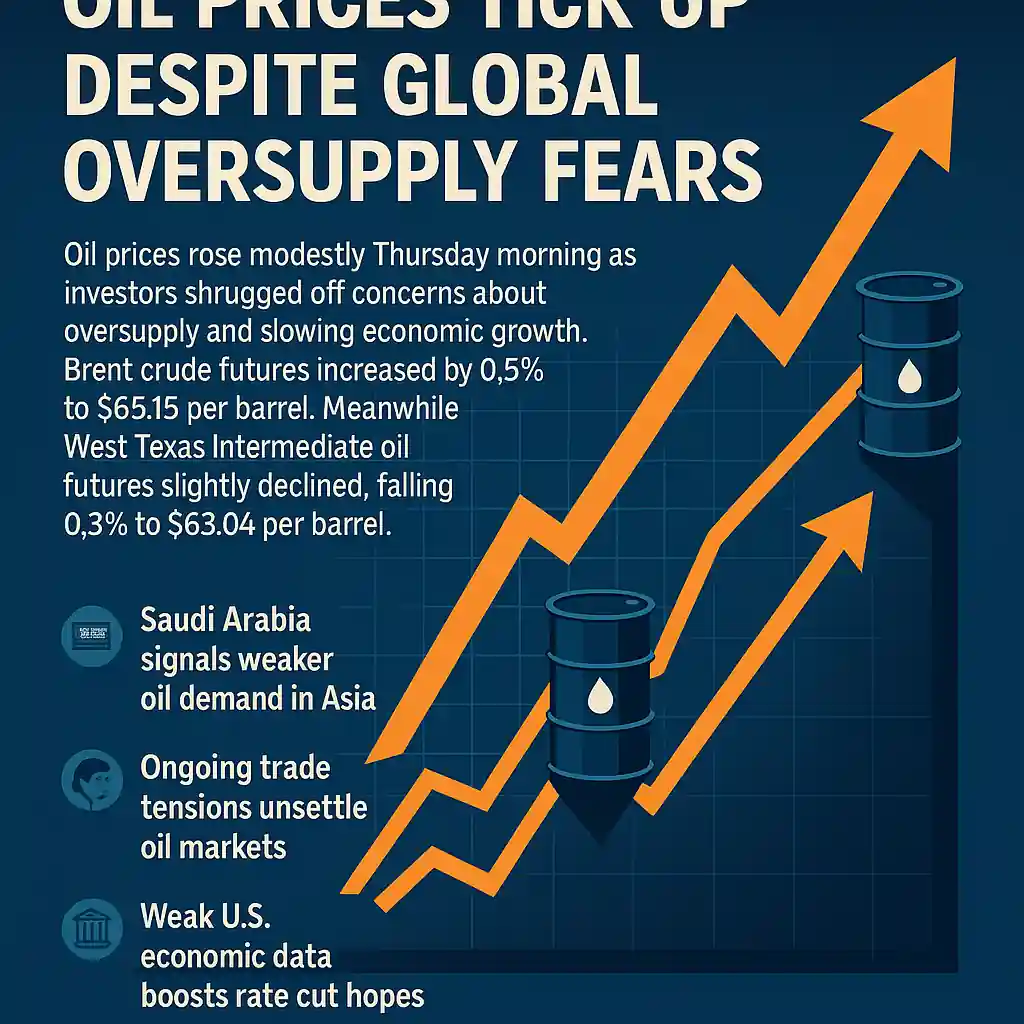Oil prices tick up despite global oversupply fears
Oil prices rose modestly Thursday morning as investors shrugged off concerns about oversupply and slowing economic growth. Brent crude futures increased by 0.5% to $65.15 per barrel. Meanwhile, West Texas Intermediate oil futures slightly declined, falling 0.3% to $63.04 per barrel.
Analysts noted that oil markets were pressured by excess supply signals. However, prices managed to edge higher due to investor confidence in broader market resilience.
Saudi Arabia signals weaker oil demand in Asia
Saudi Arabia, the world’s largest oil exporter, recently announced a July price cut for Asian buyers. This move signals weakening demand in one of oil’s key growth markets.
The decision follows an agreement by OPEC+ to boost oil production by 411,000 barrels per day starting next month. This has raised further oversupply concerns and added downward pressure on oil prices globally.
Ongoing trade tensions unsettle oil markets
Matt Britzman, a senior equity analyst at Hargreaves Lansdown, commented that “ongoing trade tensions are adding to market uncertainty.” Recent tariff actions by U.S. President Donald Trump have sparked fears of a global economic slowdown. Investors worry this could reduce oil demand across major markets.
Trump’s tariffs have rattled commodities, including oil. Many analysts believe prolonged tensions between the U.S. and China may significantly affect oil consumption patterns.
Weak U.S. economic data boosts rate cut hopes
Oil markets were also influenced by weak U.S. data. Private-sector hiring slowed, and services sector activity contracted. This raised expectations of an interest rate cut by the Federal Reserve.
In response, Trump urged Fed Chair Jerome Powell to “LOWER THE RATE.” These comments, coupled with economic data, led futures to price in 58 basis points of cuts by December. Traders now expect the first Fed rate cut in September.
ECB expected to follow Fed with rate easing
Investors also looked to the European Central Bank, which is widely expected to cut rates. The ECB is likely to reduce interest rates to 2%, with further cuts anticipated by year-end.
Oil prices often react to central bank policy changes. Rate cuts can boost economic activity, which tends to increase oil demand. Analysts believe easier monetary policy globally may support oil prices, even amid supply concerns.
Currency movements add another layer to oil pricing
The pound gained 0.1% against the U.S. dollar Thursday, trading at $1.3564. Meanwhile, the U.S. dollar index held steady at 98.85. Currency fluctuations can influence oil, which is priced in dollars. A weaker dollar often supports higher oil prices by making the commodity cheaper for foreign buyers.
Despite uncertainties, oil remained resilient. The commodity continues to trade in a volatile environment, shaped by geopolitics, tariffs, and central bank policies.
Outlook for oil remains uncertain but resilient
Though oil faces headwinds from oversupply and trade wars, investors are cautiously optimistic. Future rate cuts could stimulate economic activity and push up oil demand. At the same time, supply-side decisions by OPEC+ and Saudi Arabia will shape price movements in the months ahead.
Oil’s performance reflects broader market dynamics. As geopolitical risks and economic policy evolve, oil will remain a closely watched indicator of global sentiment.




